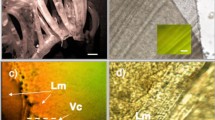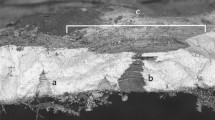Abstract
THE origin and nature of the membranes which surround the eggs of decapod Crustacea and the means whereby the eggs are attached to the pleopods of the female have both hitherto been obscure. Herrick1,2 gives a good review of the literature. Following up previous work (Yonge3) on the function of the tegumental glands in the decapods, I have found that the eggs are surrounded by two secreted membranes. The inner of these gives positive reactions to every chitin test; the outer is undoubtedly composed of the same material as the cuticle which everywhere forms the outer layer of the integument, and is secreted by the tegumental glands (for details see Yonge3).
This is a preview of subscription content, access via your institution
Access options
Subscribe to this journal
Receive 51 print issues and online access
$199.00 per year
only $3.90 per issue
Buy this article
- Purchase on Springer Link
- Instant access to full article PDF
Prices may be subject to local taxes which are calculated during checkout
Similar content being viewed by others
References
Herrick, Bull. U. S. Fish. Comm., 15, 1; 1896.
Herrick, ibid., 29, 149; 1911.
Yonge, Proc. Roy. Soc., B, 111, 298; 1932.
Needham, ” Chemical Embryology”, Cambridge, 1931.
Wigglesworth, Quart. J. Micr. Sci., 76, 269; 1933.
Lang and Yonge, J. Mar. Biol. Assoc. (in the press).
Author information
Authors and Affiliations
Rights and permissions
About this article
Cite this article
YONGE, C. Origin and Nature of the Egg Case in the Crustacea. Nature 136, 67–68 (1935). https://doi.org/10.1038/136067b0
Issue Date:
DOI: https://doi.org/10.1038/136067b0
This article is cited by
-
Function of the Labral Glands in Chirocephalus
Nature (1935)
Comments
By submitting a comment you agree to abide by our Terms and Community Guidelines. If you find something abusive or that does not comply with our terms or guidelines please flag it as inappropriate.



